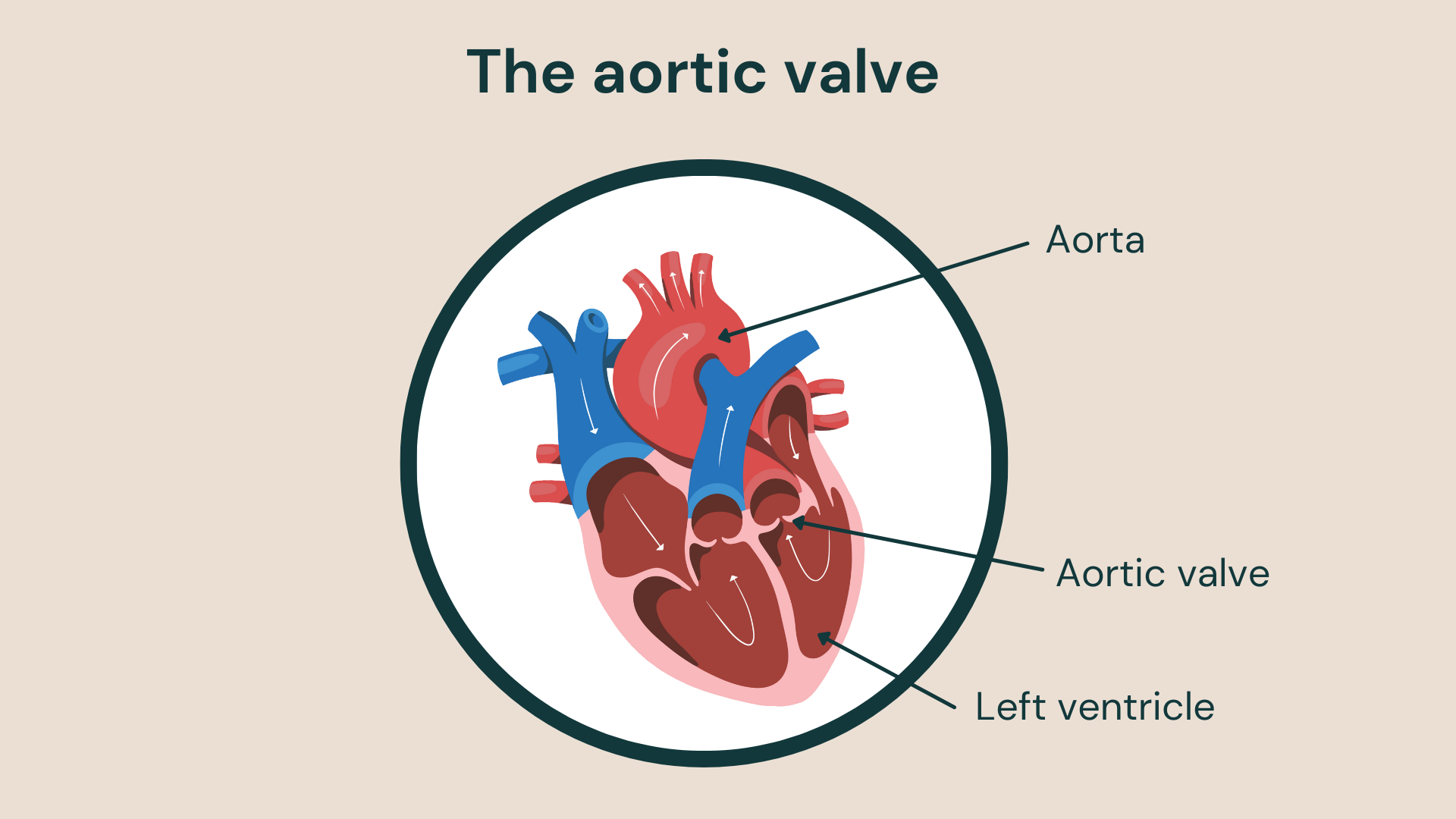Aortic stenosis is a common heart condition that causes narrowing of the aortic valve and restricts blood flow out of the heart. Around 400,000 people in the UK live with aortic stenosis, and its prevalence is increasing as the population ages.
“Aortic stenosis is a progressive condition. Over time, the valve becomes more thickened and stiffer, and the narrowing gets worse. Aortic stenosis restricts blood flow to your body, and your heart has to work harder to pump the oxygen-rich blood your organs and tissues need,” explains consultant cardiothoracic surgeon, Professor Ulrich Stock.
Aortic stenosis can gradually damage your heart and cause severe complications, including heart failure, cardiac arrhythmias and sudden death.
Aortic stenosis can cause symptoms including tiredness, palpitations, shortness of breath and chest pain. However, it can take many years to develop symptoms. Some people never complain of symptoms, even when they have severe aortic stenosis – but they may still be at risk of serious complications. Cardiologists have developed a way of assessing and categorising aortic stenosis into stages. Knowing the stage of your disease can help you understand your condition and make informed choices about your treatment.

What are the stages of aortic stenosis?
The 3 stages of aortic stenosis are:
- mild aortic stenosis
- moderate aortic stenosis
- severe aortic stenosis
The severity of the condition is estimated by analysing your symptoms, a clinical evaluation and investigations including echocardiography and cardiac catheterisation.

Aortic stenosis can gradually damage your heart and cause severe complications, including heart failure, cardiac arrhythmias and sudden death
Echocardiography for aortic stenosis
Echocardiography is the primary investigation for assessing aortic stenosis severity. It evaluates three key measures:
- Peak velocity (PVel): The top speed of the blood flowing through the valve. This is higher if the valve is narrowed.
- Mean pressure gradient (MPG): The difference in blood pressure between the left ventricle and the aorta. In aortic stenosis, this increases.
- Aortic valve area (AVA): The area of the aortic valve which decreases with stenosis
Your doctor will be able to talk you through the echo results and explain what they mean for your health and treatment planning.
How does aortic stenosis start?
The most common cause of aortic stenosis in the UK, Europe and the USA is calcium buildup on the valve. This process of thickening and stiffening of the valve is known as aortic sclerosis. It’s prevalent in people as they age, affecting more than one in four people over 65.
“If you have aortic sclerosis, your echocardiogram will show a peak velocity of less than 2.5 metres per second and a normal mean pressure gradient and aortic valve area. Over time, aortic sclerosis can narrow the valve causing aortic stenosis that reduces blood flow from the heart,” explains Professor Ulrich Stock
Mild aortic stenosis
You may not notice that you have mild aortic stenosis. Many people don’t develop symptoms until their disease is more advanced. Your doctor may pick up your valve narrowing during a routine check-up, if you are investigated for another problem, or by listening to your heartbeat. Aortic stenosis causes a characteristic heart murmur that an experienced physician can identify when listening to your heart with a stethoscope.
The symptoms of mild aortic stenosis are often vague, and you could attribute them to the natural signs of ageing or other problems. They include:
- tiredness and low energy
- breathlessness on exertion
- chest pain during exercise, if symptoms develop
If you or your doctor are worried that you have a heart problem, an investigation with an echocardiogram can confirm the diagnosis and evaluate the stenosis.
If you have mild aortic stenosis, your echocardiogram will show a peak velocity of 2.5-3 metres per second, a mean pressure gradient of less than 20mmHg and an aortic valve area less than or equal to 1.5cm².
Mild aortic stenosis treatment
Many people with mild aortic stenosis don’t need treatment. However, there are ways to optimise your health and delay symptoms from developing:
- Control your risk factors: Try to stop smoking, cut down on caffeine and alcohol, aim to maintain a healthy BMI and eat a balanced diet.
- Manage any cardiovascular diseases: See your doctor for a check-up to ensure any hypertension, high cholesterol, or diabetes are well controlled.
- Protect against endocarditis: Dental infections can spread to the heart, causing inflammation. Get a dental check and take care of your gums.
- Monitor your health: See your doctor regularly to monitor your stenosis. They should arrange regular echocardiograms to show if the condition has advanced, particularly if you notice new symptoms
Moderate aortic stenosis
“If you have moderate aortic stenosis, there is more restriction to the blood flow from your heart. You may not notice symptoms, but aortic stenosis can damage your heart and cause failure or dangerous arrhythmias. Increasing symptoms could indicate that your aortic stenosis is getting worse and needs treatment,” explains Professor Ulrich Stock.
Look out for:
- chest pain or tightness that may be worse on exercise
- palpitations – a rapid, fluttering heartbeat
- breathlessness
- feeling dizzy, faint or lightheaded
- worsening fatigue and decreasing exercise tolerance
- ankle and foot swelling
- sleep disturbance
Moderate aortic stenosis treatment
You can work with your doctor to monitor your symptoms and optimise your health.
- Control your risk factors: Although you can’t reverse the valve damage, you can help improve your general health and help your heart. Try to stop smoking, cut down on caffeine and alcohol, maintain a healthy BMI and eat a balanced diet.
- Manage any cardiovascular diseases and symptoms: Your doctor may prescribe medications to control blood pressure, reduce cholesterol, regulate abnormal heart rhythms and get rid of excess fluid.
- Monitor your heart: Your doctor or cardiologist will arrange follow-up visits, regular echocardiograms and other tests to check the health and function of your aortic valve. If you have moderate aortic stenosis, your echocardiogram will show a peak velocity of 3-4 metres per second, a mean pressure gradient of 20-40 mmHg and an aortic valve area of 1-1.5 cm²
Your cardiologist will balance the risks of the disease to your health against the risks of heart valve replacement in deciding when to consider surgery to replace your damaged valve.
Severe aortic stenosis
“Severe aortic stenosis is a serious, life-threatening condition. Severe stenosis with symptoms of breathlessness, chest pain or fainting may indicate that the heart is starting to fail. The prognosis is poor without intervention, but severe aortic stenosis can be effectively treated by replacing the heart valve,” explains Professor Ulrich Stock.
After valve replacement surgery, your symptoms will diminish, your quality of life will improve, and you should expect similar long-term survival to other people your age.
Get in touch
For more information or to book an appointment, please contact our customer care team.
Related content
-
Aortic stenosis
Aortic stenosis is a disease that affects the main outlet valve of the heart and is the third most common cardiovascular disease.
-
Echocardiogram
An echocardiogram – also known as an echo – is a scan that examines the heart and surrounding blood vessels.
-
Valve repair or replacement
Heart valve surgery can repair or replace a damaged valve.
